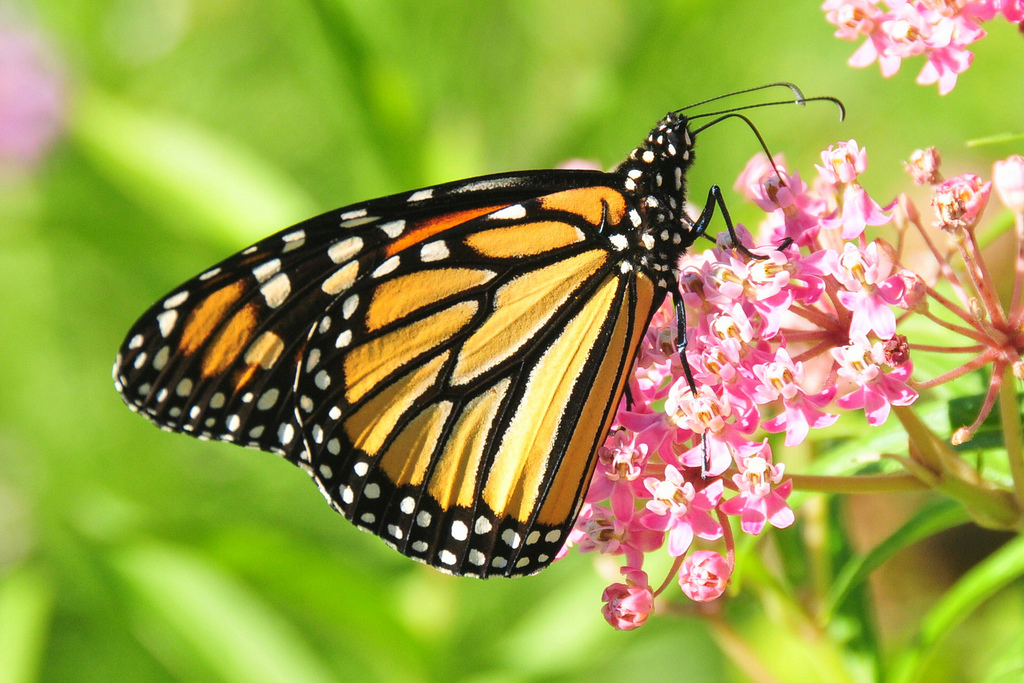
Can We Save the North American Monarch Butterfly?
The month of September marks the beginning of a 3-month, 3,000-mile migration for the monarch butterfly from Canada and the United States down to Mexico.
The annual journey this September is especially notable in light of serious population declines. Since 1997, the estimated monarch population has decreased from one billion to 56.6 million.
The monarchs’ only habitat and food supply, the milkweed plant, is quickly being eradicated through the use of glyphosate, the primary ingredient in Monsanto's popular weed-killing herbicide Roundup.
September 13, 2015 | Source: Christian Science Monitor | by Story Hinckley
The month of September marks the beginning of a 3-month, 3,000-mile migration for the monarch butterfly from Canada and the United States down to Mexico.
The annual journey this September is especially notable in light of serious population declines. Since 1997, the estimated monarch population has decreased from one billion to 56.6 million.
The monarchs’ only habitat and food supply, the milkweed plant, is quickly being eradicated through the use of glyphosate, the primary ingredient in Monsanto’s popular weed-killing herbicide Roundup.
Scientists say the correlation is simple: no milkweed, no monarchs.
“The monarch population that overwinters in Mexico has plummeted more than 90 percent in two decades – it is a perilous decline,” said Rebecca Riley, an attorney with the National Resource Defense Council (NRDC), in a June press release.
“The drop is linked to the destruction of monarch habitat, as massive use of glyphosate in farm fields along the ‘Butterfly Highway’ through the U.S. and Canada has killed the milkweed plants monarch caterpillars need to survive. To preserve the spectacular monarch migration, we must act quickly, rather than spend years in deliberation as the crisis worsens.”
But more time to deliberate is just what the US Environmental Protection Agency (EPA) says it needs.
In June the EPA announced that it will spend the next five years studying the effects of Roundup on more than 1,500 endangered species, including the monarch. This study is the result of a settlement between the EPA and the Center for Biological Diversity, a San Francisco-based group that sued the agency in 2007 for violating the Endangered Species Act.
“The EPA apparently plans to study the monarch migration to extinction,” said Dr. Sylvia Fallon in June, an NRDC senior scientist and director of its Wildlife Conservation Project. “It’s inexcusable for the EPA to call for more time to show glyphosate’s harm while at the same time approving new glyphosate-based pesticides that kill the sole food source monarchs need to live.”
